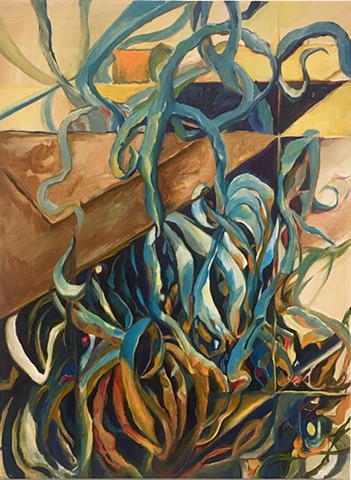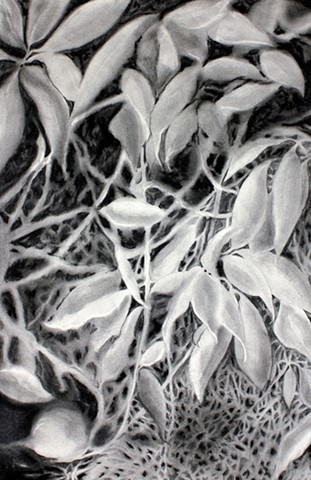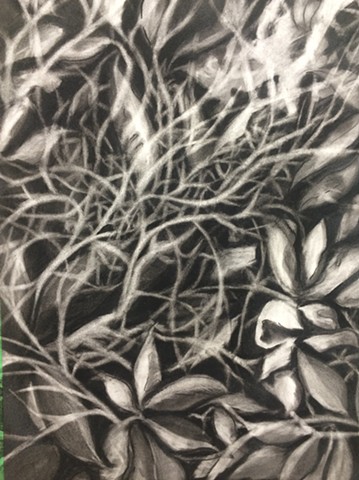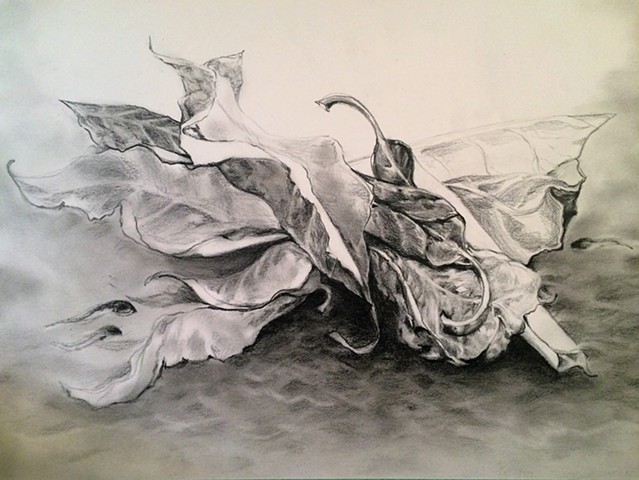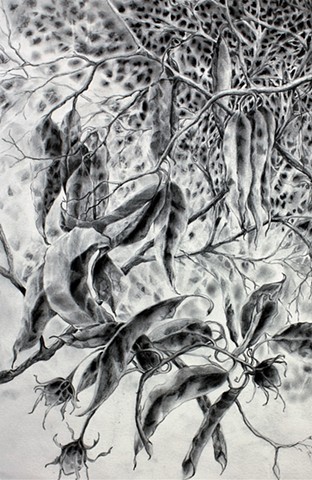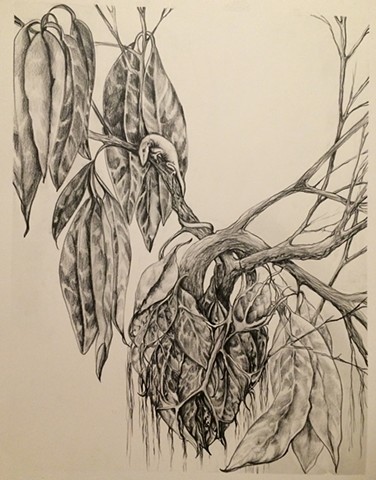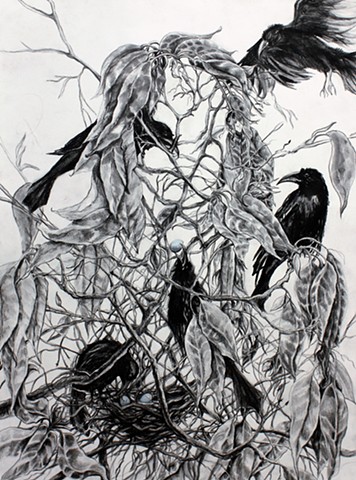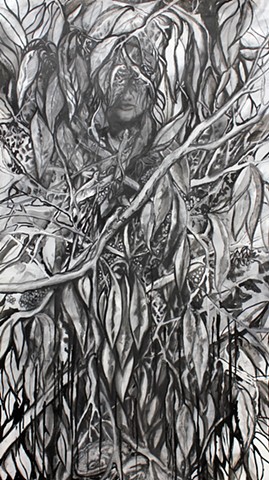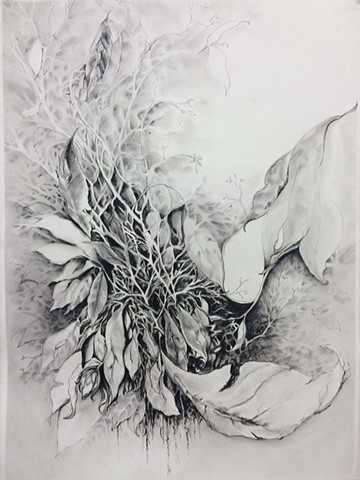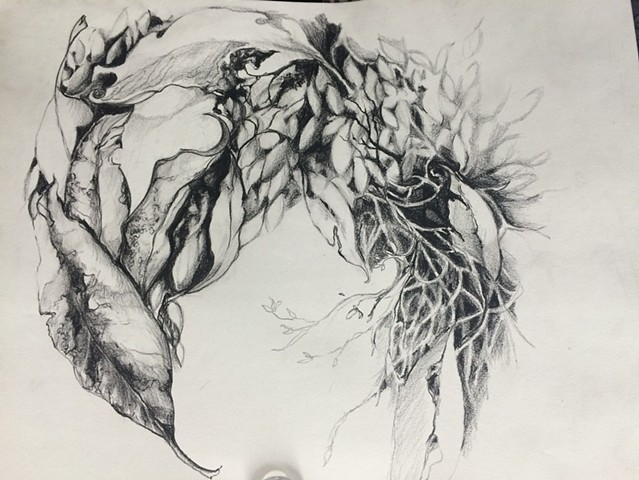Ties that Bind (Click Image to Expand Gallery)
Large, flat leaves festooned with clusters of delicate pink and white flowers, twisted branches, and gnarled trunks of the wild rhododendron were an ever-present and significant part of the imagery of my childhood. Through my research, I discovered that elements of the shrub, including the blooms, contain a potentially toxic substance. In this work, I utilized this imagery to illustrate the concept of beauty entwined with danger. Observing cuttings from the plant over several weeks, I noted that the leaves become more visually compelling as they wilt. They develop new colors and patterns as damage from insects and weather becomes more apparent. They roll up in a seemingly self-protective way before falling from the branches. The boughs bore many buds that might have been flowers had they not been cut. The tension between the potential for new life and the inevitable demise of the leaves and blooms is a poignant illustration of hopefulness in the face of decay and loss.
